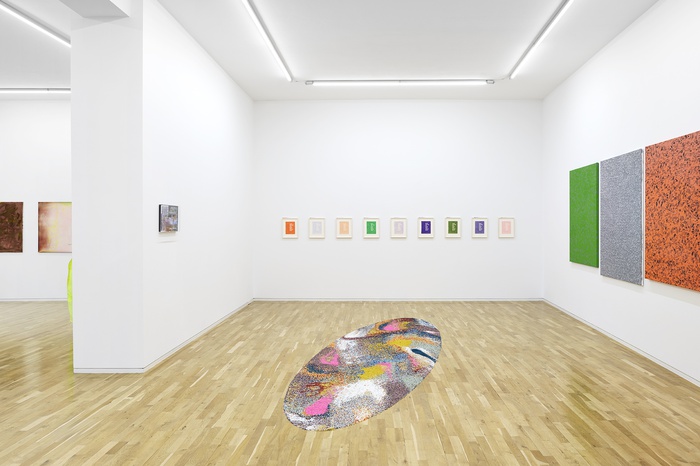
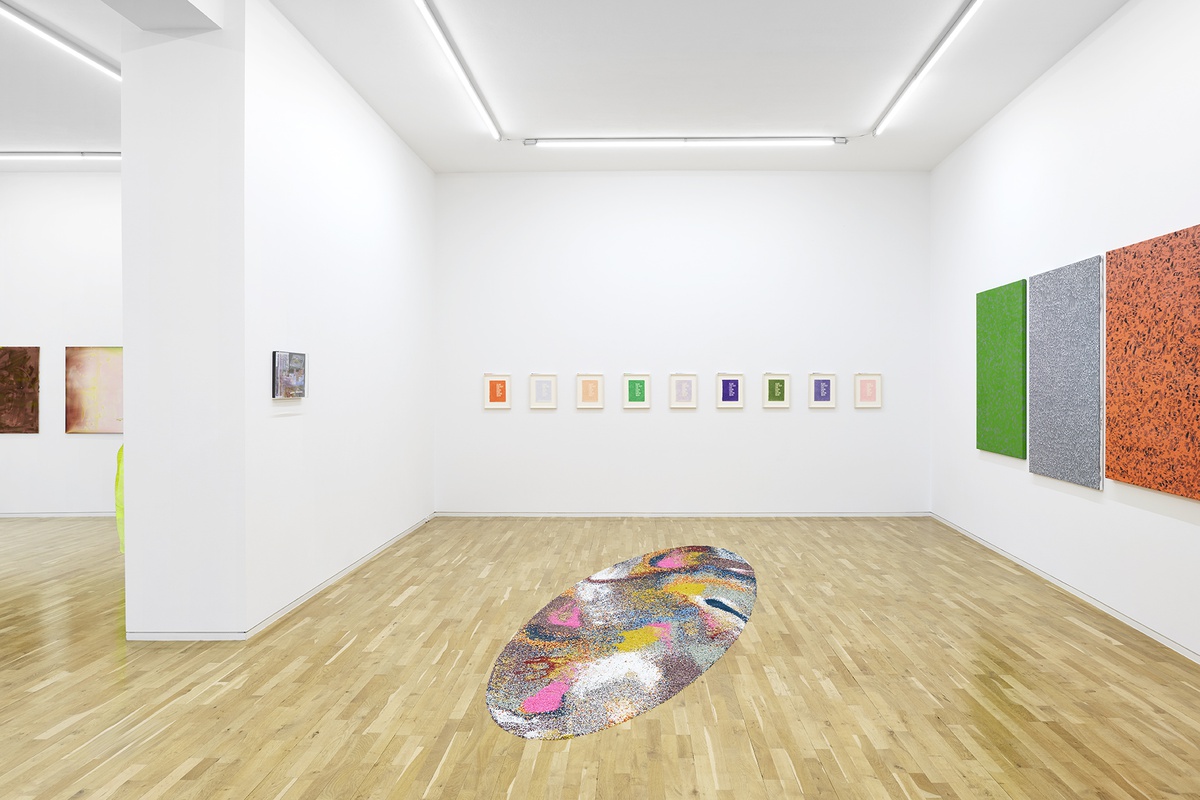
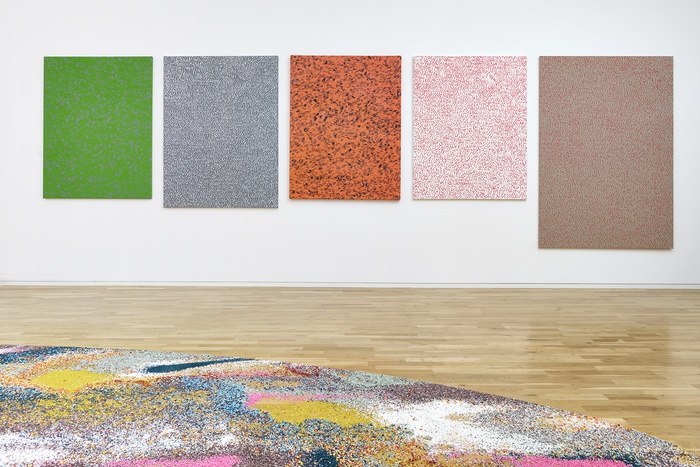
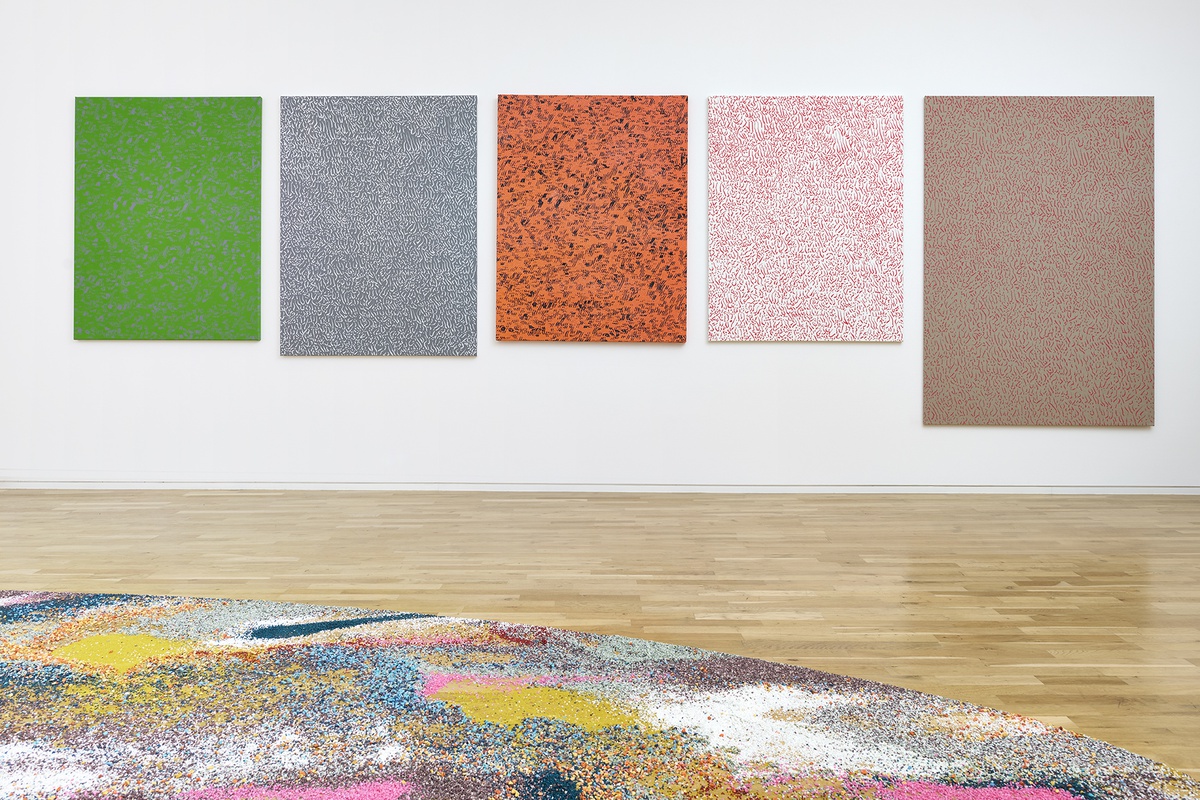
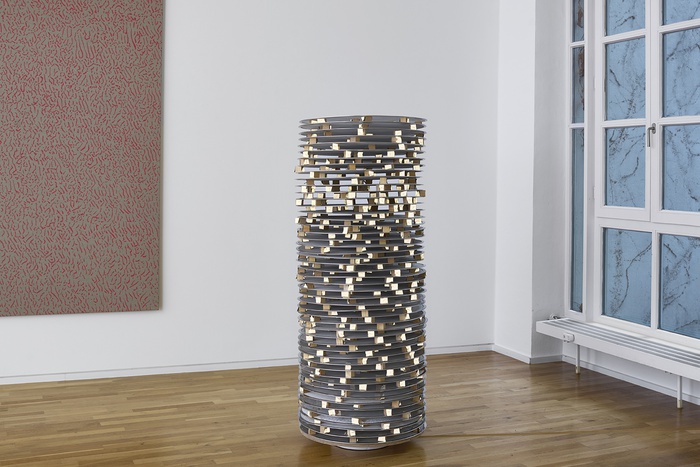
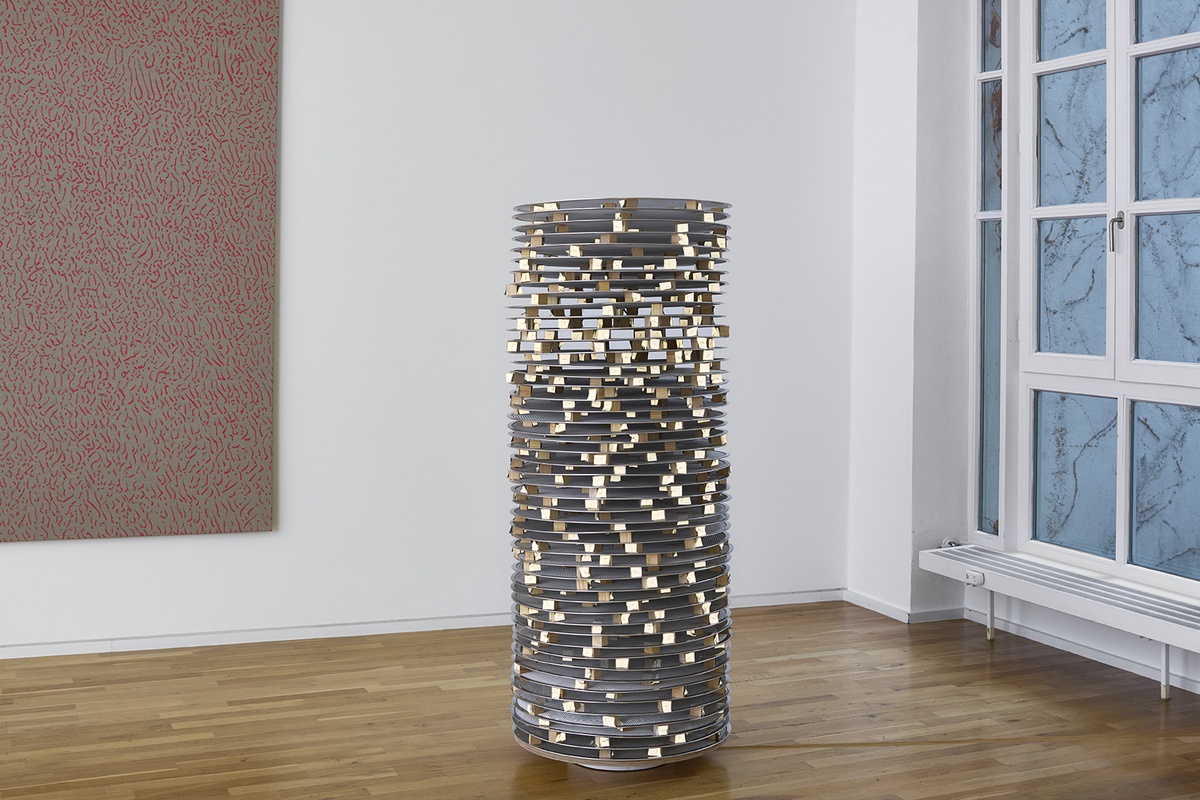
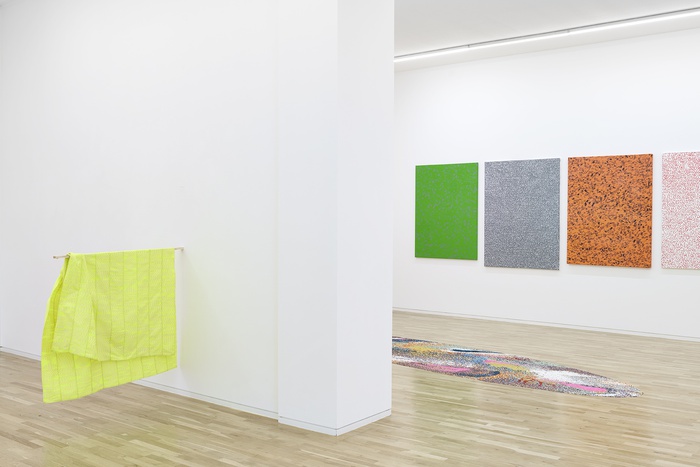
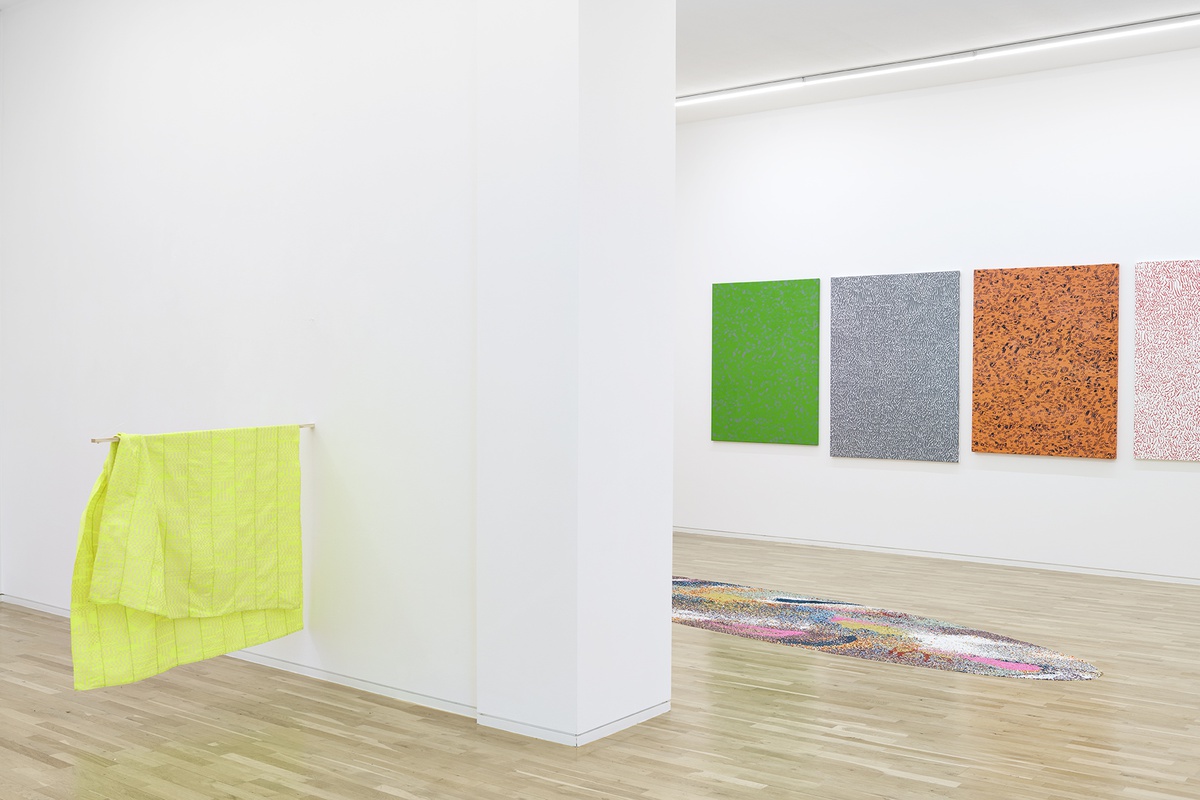
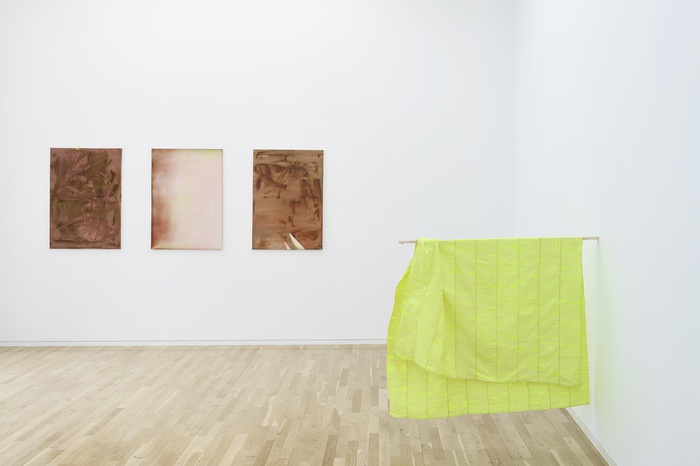
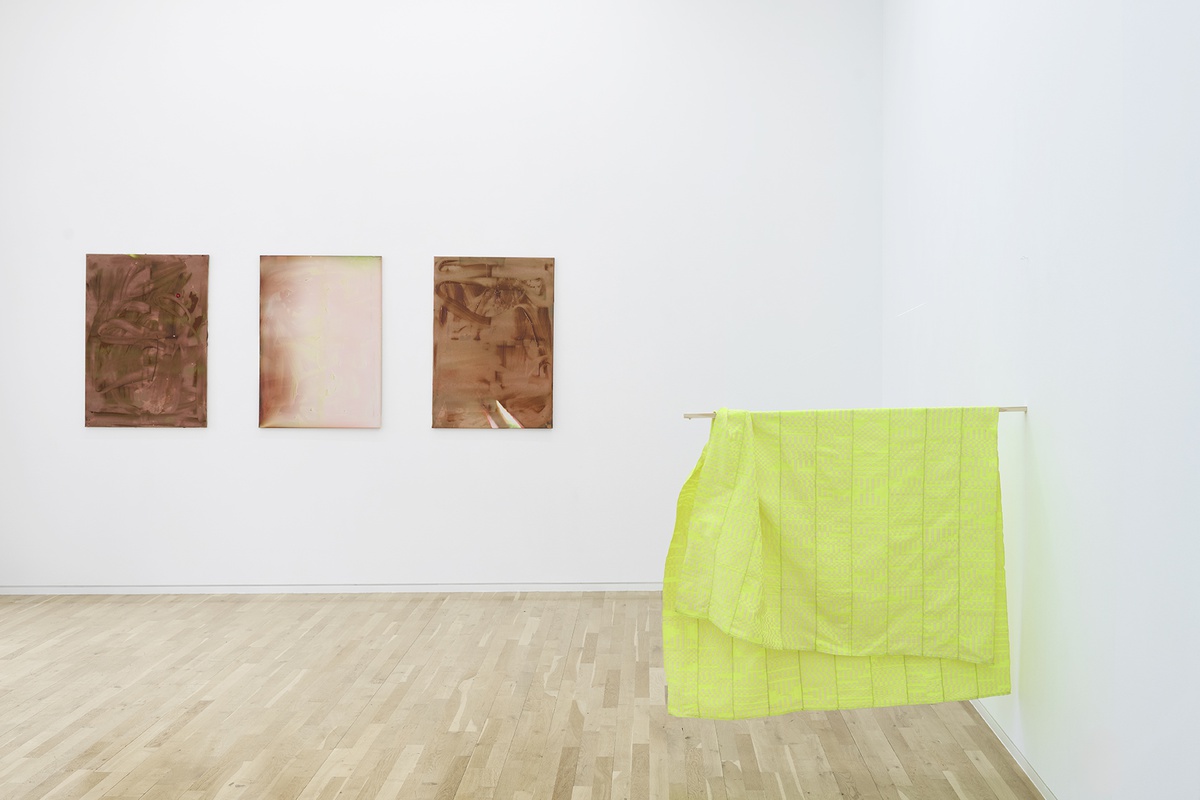
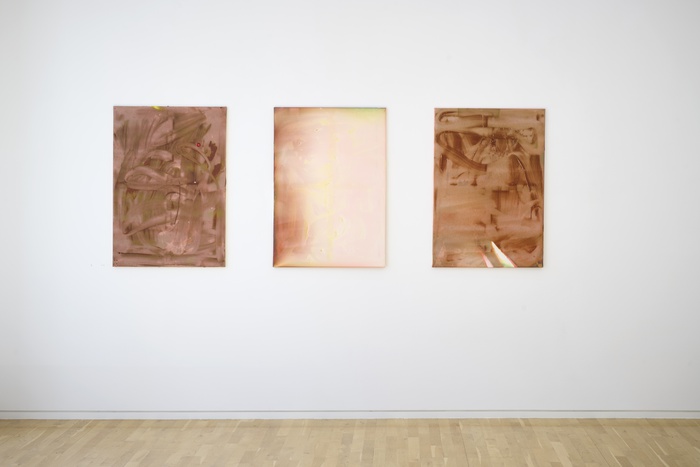
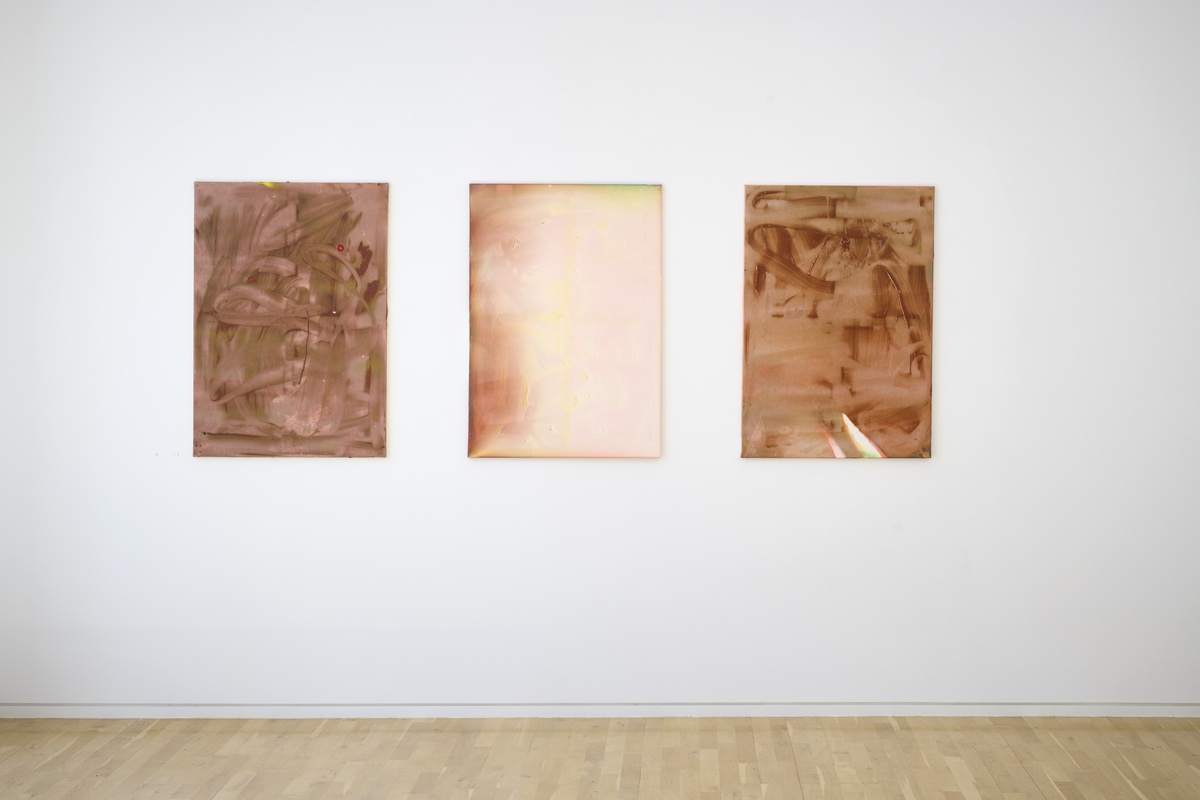
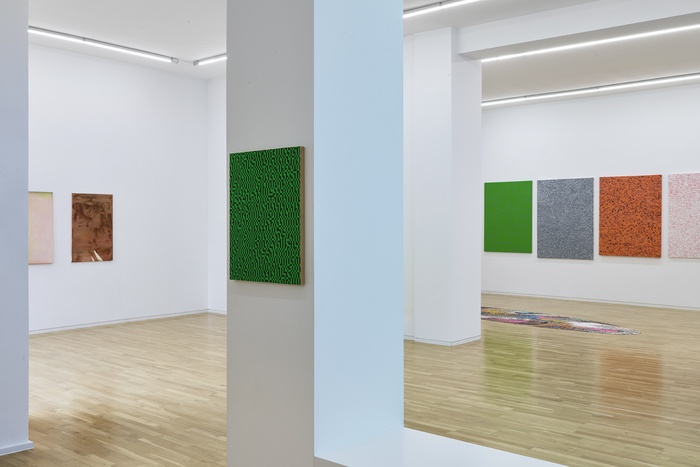
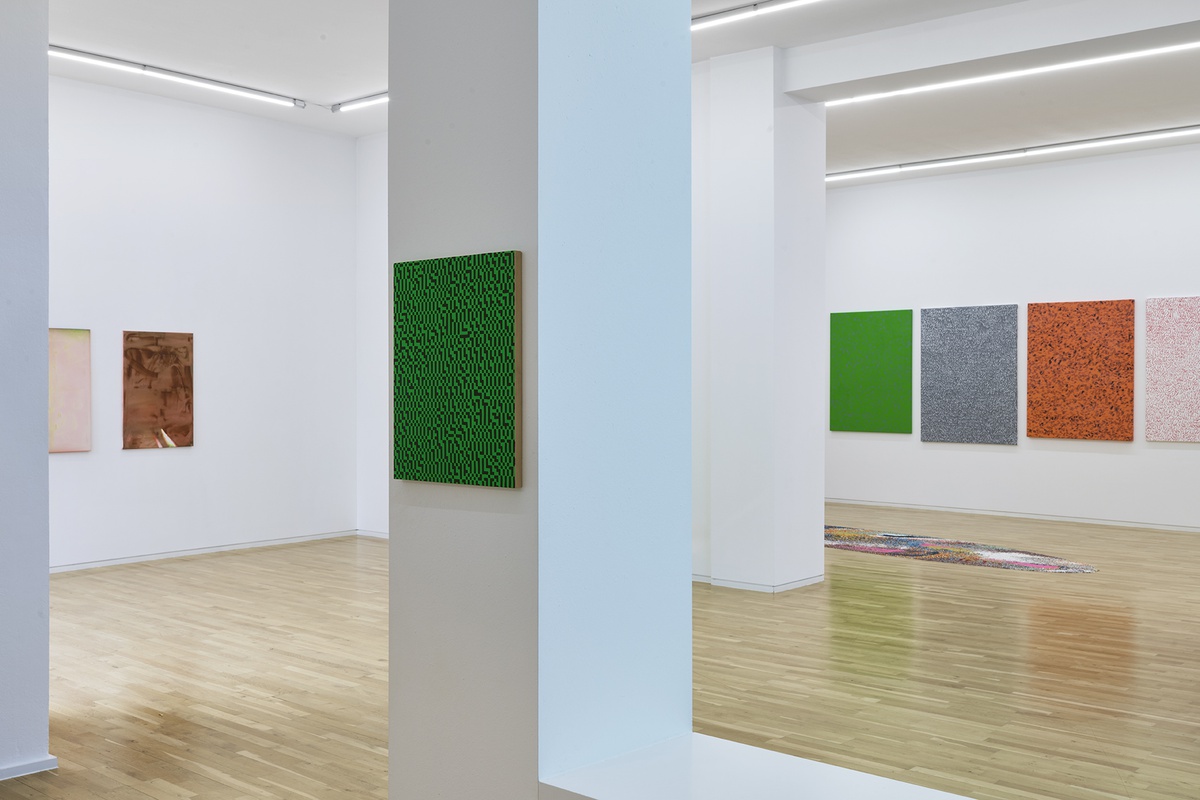
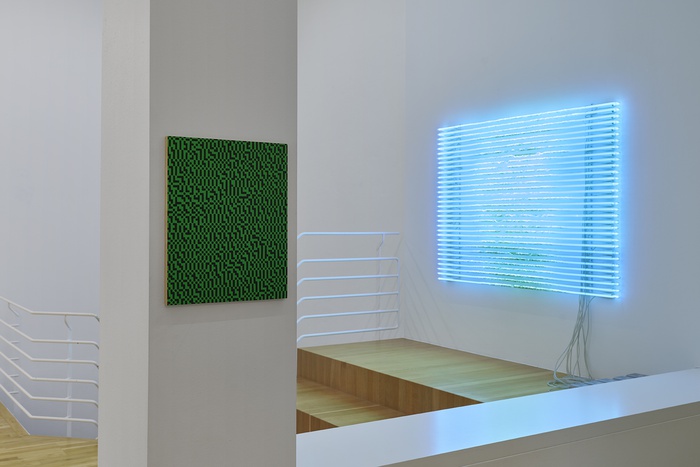
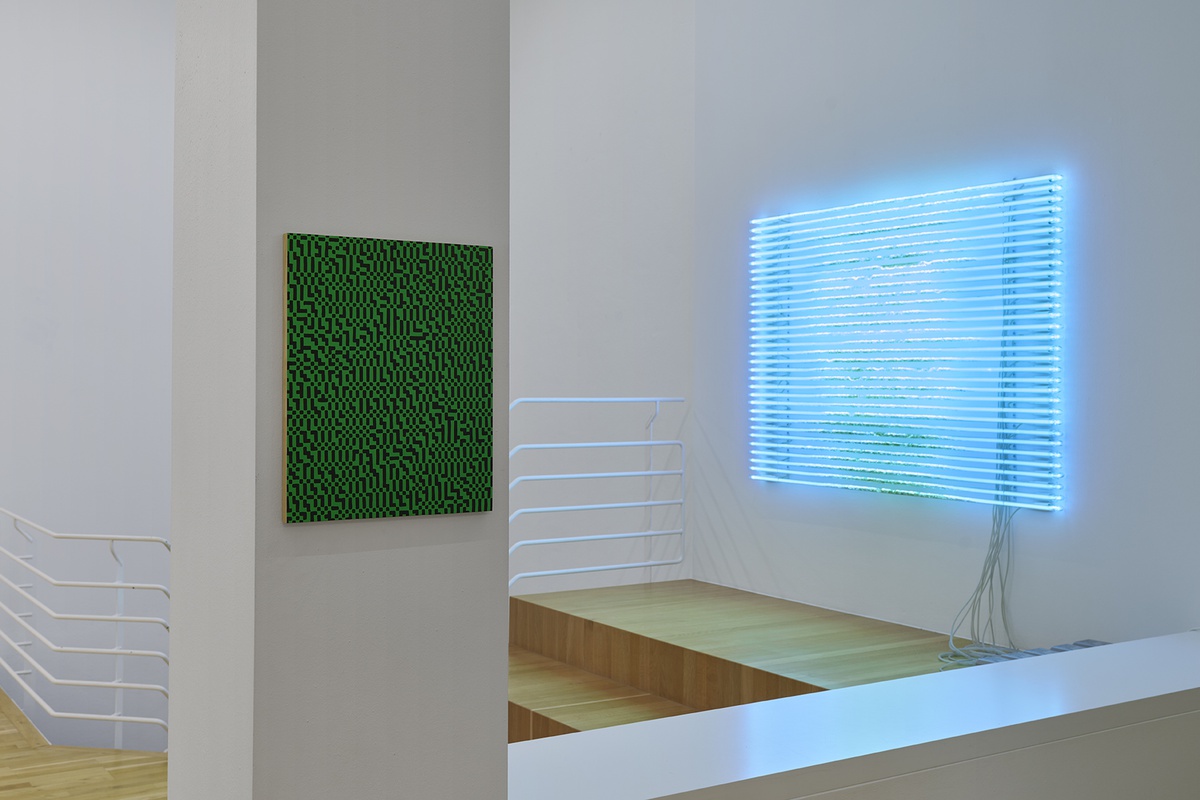
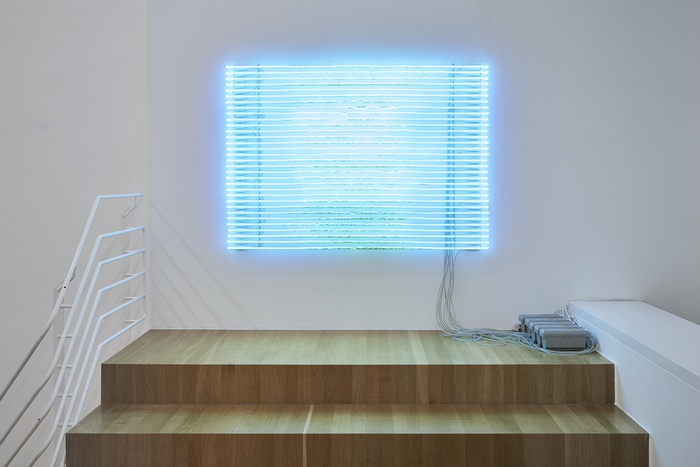
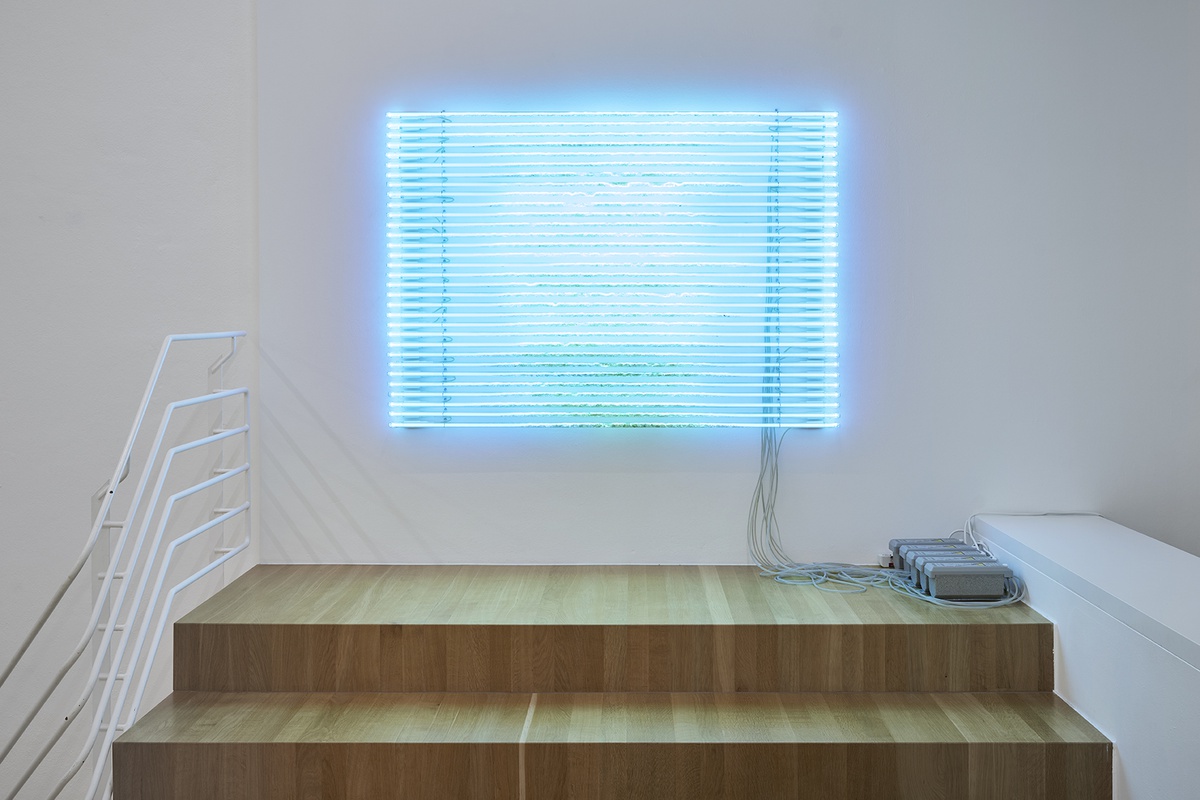
Installationsansicht, Jahn und Jahn, München, 2025
Installationsansicht, Jahn und Jahn, München, 2025
Installationsansicht, Jahn und Jahn, München, 2025
Installationsansicht, Jahn und Jahn, München, 2025
Installationsansicht, Jahn und Jahn, München, 2025
Installationsansicht, Jahn und Jahn, München, 2025
Installationsansicht, Jahn und Jahn, München, 2025
Installationsansicht, Jahn und Jahn, München, 2025
Installationsansicht, Jahn und Jahn, München, 2025
Eröffnung am 19. September 2025, 18–21 Uhr
Jahn und Jahn freut sich, nach Ausstellungen 2020 in München und 2023 in Lissabon, die dritte Einzelausstellung des niederländisch-iranischen Künstlers Navid Nuur (geb. 1976) zu präsentieren.
Nuur bezeichnet seine Werke gerne selbst als „Interimodule“, ein Konzept, das sich auf eine temporäre, flexible Einheit bezieht. Das Wort kombiniert „interim“ – etwas Vorläufiges, Nicht-Festes – mit „Modul“, was auf einen Teil verweist, der mit anderen Teilen verbunden werden kann, sich anpassen und verschieben lässt. Der Begriff beschreibt kein klar abgrenzbares Kunstwerk, sondern einen modularen Moment, der sich an Kontext und Bedeutung anpasst. Jedes Kunstwerk kann als Zwischenraum betrachtet werden, in dem Material, Gedanke und Situation vorübergehend zusammenkommen. Dadurch wird das Kunstwerk weniger als ein geschlossenes Objekt aufgefasst, sondern wird vielmehr als eine prozesshafte Konstellation verstanden, die offen für Veränderungen bleibt. Die Nützlichkeit dieses Begriffs liegt in der Perspektive, sich damit nicht auf eine bereits bestehende Terminologie oder starre Denkmuster zurückziehen zu können. Durch die Bezeichnung des Kunstwerks als „Interimodul“ bleibt die Aufmerksamkeit auf das gerichtet, was das Werk selbst verlangt.
Nuur hat für die Ausstellung ein Plakat mit dem Titel MINDFUL MURMURATION entworfen, welches das Ausstellungskonzept visualisiert und das von allen Besucherinnen und Besuchern mitgenommen werden kann. Eine Schwarmformation (Engl.: Murmuration) bezieht sich auf das natürliche Phänomen, bei dem Vögel sich in fließenden, sich ständig verändernden Flugbewegungen zusammenfinden. Nuur reflektiert mithilfe dieses Bildes den Zustand, der sich in den letzten fünfzehn Jahren durch die Erfahrung des Arbeitens und Schaffens von in Serien angelegten Kunstwerken herausgebildet hat. In dieser Ausstellung vereint bilden die Werke nun eine eigene Konstellation – sie spiegeln in sich und als Gruppe die achtsame und dynamische Bewegung eines Schwarmes.
Die sogenannten „smoke paintings“ (Rauchbilder) sind vor Ort in der Galerie in einem Verfahren entstanden, bei dem frisch grundierte Leinwände in einem abgeschlossenen Raum farbigen Rauchbomben ausgesetzt werden. In dieser Umgebung entfalten sich die Pigmente in der Luft des ihnen zugewiesenen Raumes, setzen sich auf den Bildern und am Boden ab und hinterlassen auf diese Weise ihre Spuren. Das Ergebnis ist ein Akt der Spurensuche, die autonom vom Material selbst ausgeführt wird. Hier dient Farbe nicht der Illustration, sondern der Darstellung; sie drückt sich ohne die Vermittlung durch die Hand des Künstlers aus. Dieser trägt jedoch Sorge für die Voraussetzungen und den Ablauf des Prozesses der Bildgenese und lässt das Werk dann in seinem eigenen Rhythmus und seiner eigenen Form entstehen.
Einen Gegenpol dazu bilden die Gemälde der Serie „The Eye-Codex of the Monochrome“, die im gesamten Ausstellungsraum verteilt sind. Wenn wir unsere Augen schließen oder uns in völliger Dunkelheit befinden, sehen wir „nichts“, aber dennoch „etwas“, so der Künstler. Dieses Phänomen wird als „Eigengrau“ bezeichnet und kann als visuelle Wahrnehmung im Gehirn ohne äußeren Reiz erklärt werden. Nuur überträgt seine eigene Auseinandersetzung mit dieser Thematik, die 1980 begann, in seine Werke und verwendet für die Umsetzung ausschließlich funktionale Farben (Chroma Key-Grün, Grundierungen, Retouchemarker, Straßenmarkierungsfarbe usw.). Auf diese Weise vermeidet er den Gebrauch künstlerisch bzw. kulturell kodierter Farben.
Der ausgestellte gelbe Stoff („Ghana Carpet“) ist das Ergebnis einer Zusammenarbeit des Künstlers mit lokalen Weberinnen in Ghana, Afrika, im Jahr 2012. Traditionell bringen diese Stoffe durch verschiedene Kompositionen Identität, Status und Glauben zum Ausdruck. Nuur kombiniert hier die Visualisierung einer auf einen engen Personenkreis begrenzten (internen) Sprache mit einem von außen stammenden (externen) Code, der in den Stoff eingewebt ist.
Die Serie „Please free also this colour from Pantone prison“ (2014–2025) präsentiert neun Buntsiftzeichnungen, deren eingeschriebene Texte eine Bedeutungsebene öffnen, die erst auf den zweiten Blick sichtbar wird. Jeder Rahmen trägt zudem einen Buntstift mit der jeweiligen farbidentifizierenden Nummer. Gemeinsam hinterfragen Zeichnung und Stift das Pantone Colour Matching System – ein Tool, das entwickelt wurde, um Farben in Design und Produktion in einer globalisierten Welt zu standardisieren. Was oft als System der Klarheit und Effizienz gepriesen wird, entpuppt sich auch als Kontrollmechanismus, der das breite Spektrum der Farben auf festgelegte Codes reduziert. Als Kunstwerke, die sich außerhalb solcher Codes bewegen, behaupten Nuurs Papierarbeiten das Recht, Farbe von jedweder Art chromatischer Standardisierung zu befreien. Die simple Handlung, Buntstift auf Papier zum Zeichnen zu verwenden, verdeutlicht diese Freiheit: Der Druck der Hand macht jeden Strich und jede Nuance von Natur aus einzigartig. Auf diese Weise widersetzen sich die Zeichnungen nicht nur den Beschränkungen von Pantone, sondern bekräftigen auch eine umfassendere Praxis kreativer Autonomie, in der Farbe und Ausdruck nicht eingegrenzt werden können.
Im Zusammenhang damit steht auch die Grundidee der Lichtinstallation „Broken Square“. Die Röhren bildeten einst ein perfektes Quadrat; nun teilweise zerbrochen, wurden die Scherben in die übrigen Röhren eingelegt. Auf diese Weise hat der Künstler die Form verändert, doch das Volumen des Quadrats bleibt bestehen. So entsteht ein Rechteck, das die Erinnerung an seine Ursprungsform in sich trägt. Dieses Werk repräsentiert gewissermaßen eine Lücke in der Geschichte der künstlerischen Arbeit mit Leuchtstoffen: Während sich die meisten Neon-Kunstwerke auf die äußere Form und Präsenz konzentrieren, liegt hier der Schwerpunkt auf dem innen Wesen des Materials selbst. Durch die gestörte Bewegung des Argongases im Inneren erzeugen Glas und Glasscherben sowohl ein Bild als auch dessen Spiegelbild – ein zwar umgeformtes und dennoch höchst lebendiges Quadrat.
2023 wurde der Künstler von der Stadt München gebeten, im Rahmen eines Wettbewerbs einen Vorschlag für ein öffentliches Kunstwerk an einem Ort seiner Wahl zu entwickeln. Diese Einladung führte zur Konzeption der sogenannten „Münchner Methode“ („The Munich Method“), einem Verfahren, mit dem die Struktur der funktionalen Stadt auf „blinde Flecken“ hin untersucht wird: Orte ohne klare, feste oder flexible Bestimmung, Räume, die innerhalb des Stadtplans undefiniert bleiben. Aus fünf von Nuur identifizierten, geeigneten Standorten gingen zwei Vorschläge hervor, die mit seiner Idee einer Schwarmformation – MINDFUL MURMURATION – im Einklang stehen. Diese Werke knüpfen nicht nur an das übergeordnete Thema der Ausstellung an, sondern verankern es auch in einem lokalen Kontext und verbinden so das Ausstellungserlebnis mit den ortsspezifischen Eigenheiten des urbanen Gebiets Münchens.
Navid Nuur (*1976 in Teheran, lebt und arbeitet in Den Haag). Ausbildung: 1999-2001 Homeschool vor de Gunsten (HKU), Utrecht; 2002-2003 Piet Zwar Institute, Rotterdam; 2002-2004 MA Plymouth University. Ausgewählte Auszeichnungen: 2010 Volkskrant Prize Charlotte Kohlerprijs, 2011 Royal Award for Painting in Amsterdam, 2013 Discovery Prize Art Basel Hong Kong (zusammen mit Adrian Ghenie). Werke des Künstlers befinden sich in bedeutenden Sammlungen und Museen: Stedelijk Museum, Amsterdam; Centre Georges Pompidou / Musée National d'Art Moderne, Paris; Neuer Berliner Kunstverein, Berlin; Kunsthalle Zürich; etc.
Ausgewählte Einzelausstellungen: 2025 soda, Kyoto, Japan; 2024 Oude Kerk, Amsterdam; 2023 soda, Kyoto, Japan; 2023 Jahn und Jahn, Lissabon; 2023 Parliament Gallery, Paris; 2022 Galerie Max Hezler, Berlin; 2021 Galeria Plan B, Berlin; 2021 Galerie Max Hetzler, London; 2020 Kunstmuseum Den Haag; 2020 Marta Herford, Museum für Kunst, Architektur, Design, Herford; 2020 Jahn und Jahn, München; 2019 NDSM-WERF, Amsterdam; 2019 Galerie Max Hetzler, Paris; 2019 Gallery Sofe Van de Velde, Antwerpen, Belgien; 2018 Plan B, Berlin; 2017 Be-Part, Platform voor Actuele Kunst, Waregum, Belgien; 2017 Martin van Zomeren Gallery, Amsterdam; 2017 Galerie Max Hetzler, Berlin; 2016 Galerie Martin van Zomeren, Amsterdam; etc.
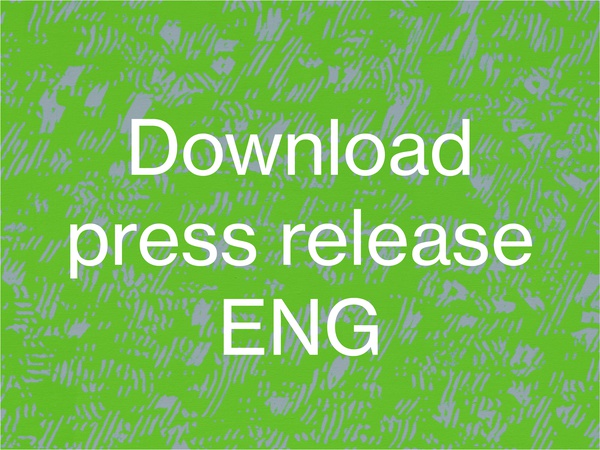
Nuur_withoutprices_s.pdf (1,0 MB)